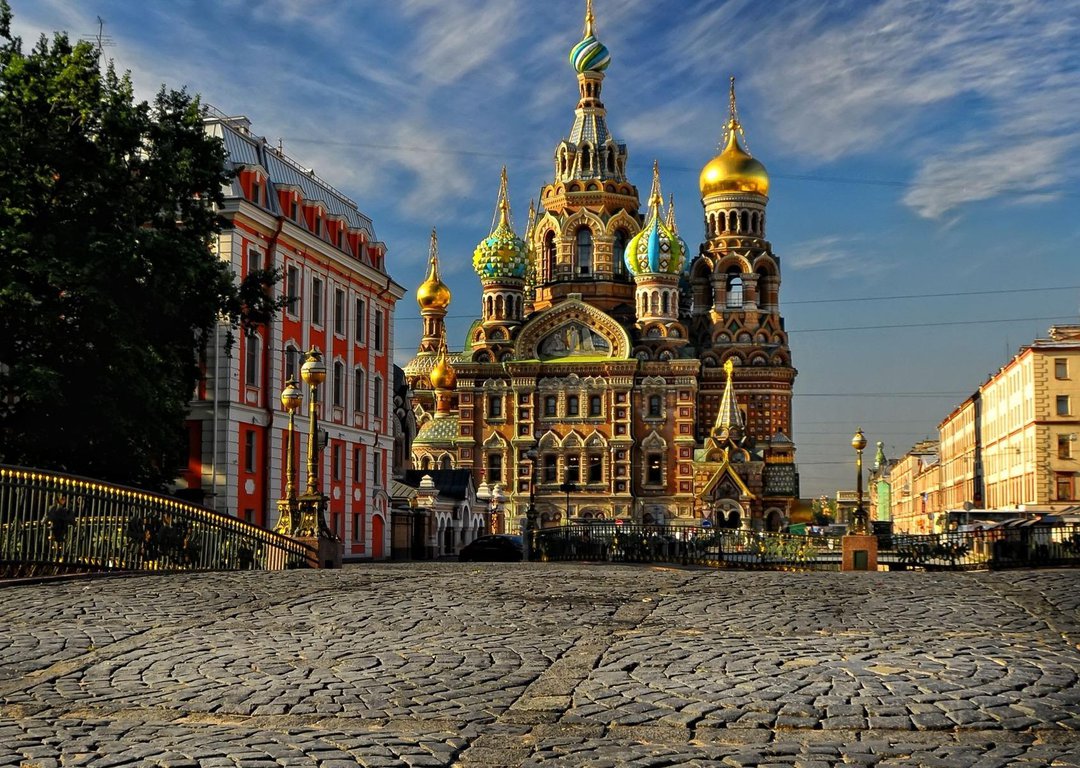 The Winter Palace aka Hermitage Museum
The Winter Palace aka Hermitage Museum➤ Breakfast
➤ Guided Tour of the Winter Palace and Hermitage
➤ City Sightseeing Tour visiting the Church of the Spilled Blood
 Beautiful seasons in St. Petersburg
Beautiful seasons in St. PetersburgThe State Hermitage Museum is often called St. Petersburg’s most important site - a title we think is well deserved. The Winter Palace, the main building of the Hermitage, was home to the Russian Tsars and royal family. There is no better way to understand the heart and soul of St. Petersburg than by roaming the grounds of the Hermitage. Come face to face with history, and the majestic splendour of this unapologetically baroque Palace.
 The Hermitage
The HermitageAfter enjoying some traditional Russian food at a stolovaya, or a ‘canteen’, take a short walk past St. Petersburg’s most iconic churches. St Isaac’s Cathedral is one of the world’s largest cathedrals, and its dome is unmissable from any vantage point in St Petersburg. If you’re looking for ornate, this is it.
Surprisingly, St Petersburg is one of the leading gastronomic destinations in Europe. Original and varied, Russian cuisine is famous for exotic soups, which are eaten for lunch. Amongst soups, we should first of all mention "schi" made of sourcrout and "solyanka", made of assorted meats. Russians are great lovers of pelmeni, small Siberian meat pies boiled in broth. Those are very similar to Italian ravioli but larger in size, more like Chinese dumplings. Mushrooms are one of the most abundant gifts of Russian woods. Those are eaten fried, pickled, salted or boiled. We should also mention "pirozhki" and "bliny" - pancakes, the later became a symbolic Russian food every serious traveler has to try with the caviar.
 St Isaac's Cathedral
St Isaac's CathedralConstruction of beautiful Kazan cathedral commenced at the start of the 19th century, and this neoclassical beauty has stood tall and proud ever since. Often commended as having some of the most beautiful features of any cathedral in the world, the scale of Kazan is something you must experience for yourself.
 Church of the Saviour on the Spilled Blood
Church of the Saviour on the Spilled BloodBuilt in the 19th century, the Church of the Savior on the Spilled Blood is a dramatic feast for the eyes, with an intriguing history. It’s shrouded in mystery and legend, stemming from the assassination attempt on Tsar Alexander II. Designed in the quintessential Russian Orthodox style of extravagant colour and texture, it’s not difficult to see why the Church of the Spilled Blood took 24 years to complete.
During the late Soviet era, the church permanently stood in a falsework. This was lasting for so, so long that finally St. Petersburg residents made an ironic belief that as soon as falsework was removed, the entire USSR would be removed as well. Believe it or not, but the fact is: in 1991 the temple’s falsework was finally taken away and the same year, in August 1991, the end of the Soviet power has come.
 Boat cruises
Boat cruisesNot tired yet? Enjoy a romantic cruise down the canals of St. Petersburg, and see some of the city’s monuments on the banks of the River Neva, all beautifully illuminated for the evening. Private or in a small group (up to 10 people), by regular or a luxury boat, Neva cruise is the best way to experience the grandness and beauty of the Venice of the North! Please inquire and we will develop a personal offer for your party.
 Midnight drawing bridges cruise
Midnight drawing bridges cruiseAnother great option of the day: St. Petersburg drawbridges’ opening and closing is a magnificent show, spectacular and captivating. What’s interesting it’s not a tourist attraction, but a purely technological procedure, the fact which adds flavor to the experience. St Petersburg has 9 out of 10 world's biggest bridges that are lifted regularly. The remaining one is the London’s Tower bridge. Optional midnight drawing bridges cruise is seasonally available, please inquire.
 Sphinxes of St Petersburg
Sphinxes of St Petersburg
It's more fun to walk along the embankments of the Neva from the side of Vasilyevsky Island that along the embankments of the central part of the city. It is from here that there is a gorgeous view of St. Isaac's Cathedral, the Admiralty and the mansions. The main attraction of the University embankment is two granite sphinxes of the 14th century. They were brought to St. Petersburg back in 1832 from Thebes, the ancient capital of Egypt. The faces of mythical animals are a portrait of the Egyptian pharaoh Amenhotep III. In his memorial temple, these sculptures were discovered.
There are many urban legends about the Sphinxes, and they are very contradictory. Some say that stroking them is fortunately, and if you make a wish near the statues, it will be fulfilled. According to others, you can't look at sculptures for a long time, otherwise you will go crazy: sphinxes avenge St. Petersburgers for disturbing their peace and taking them away from their homeland. One is for true: the expressions on their faces change depending on the lighting and the time of day. They seem to smile in good weather and become harsh in overcast.